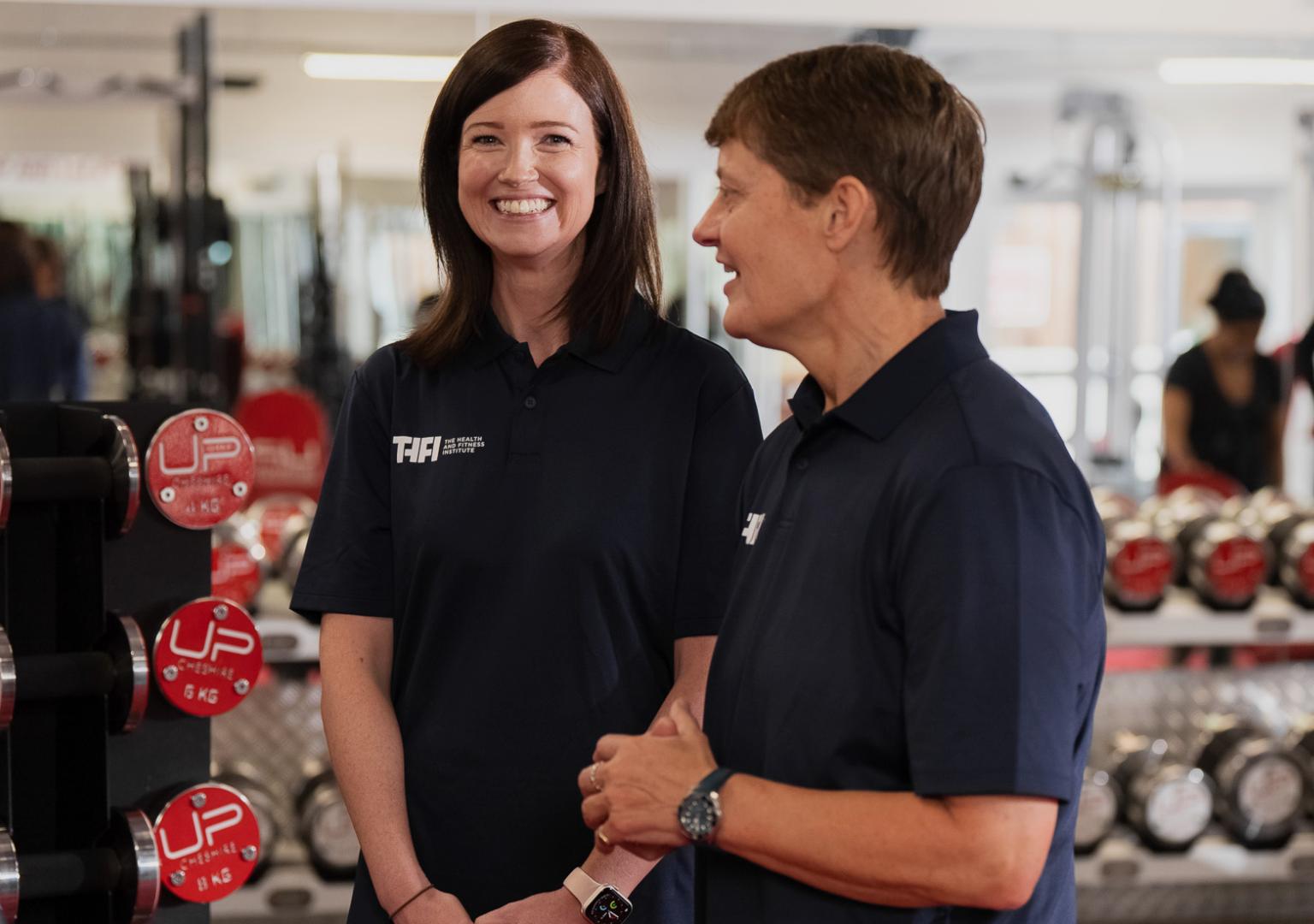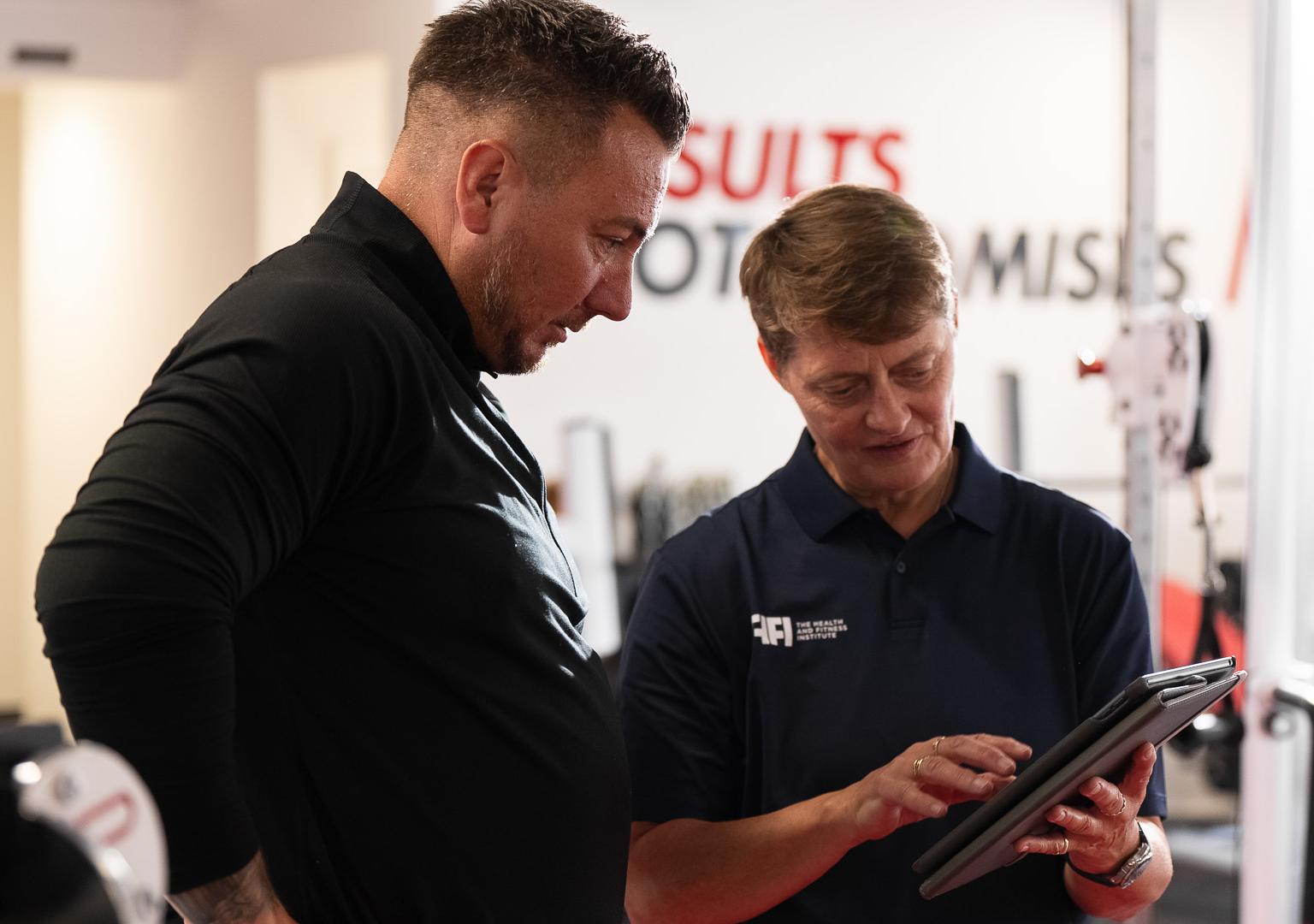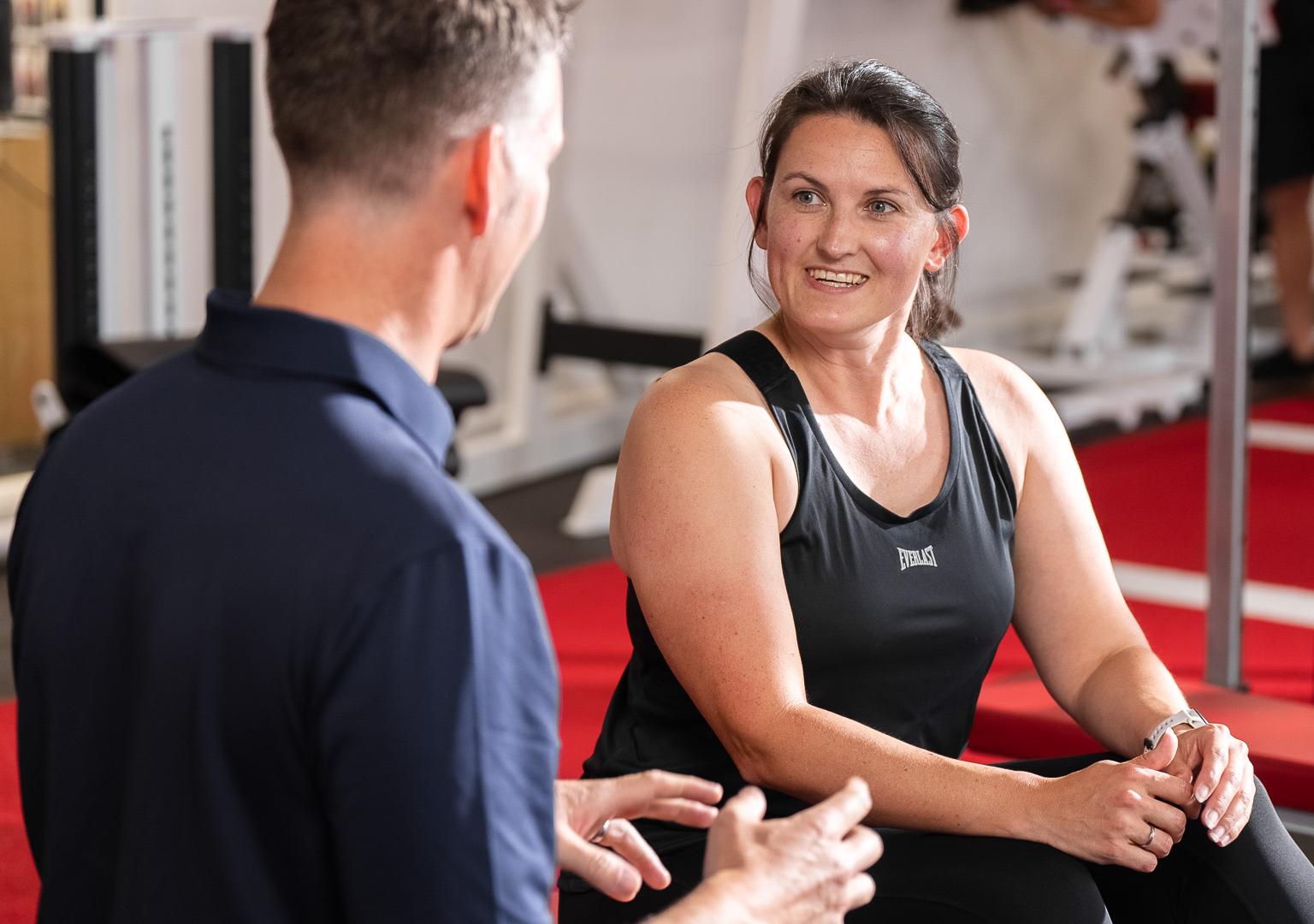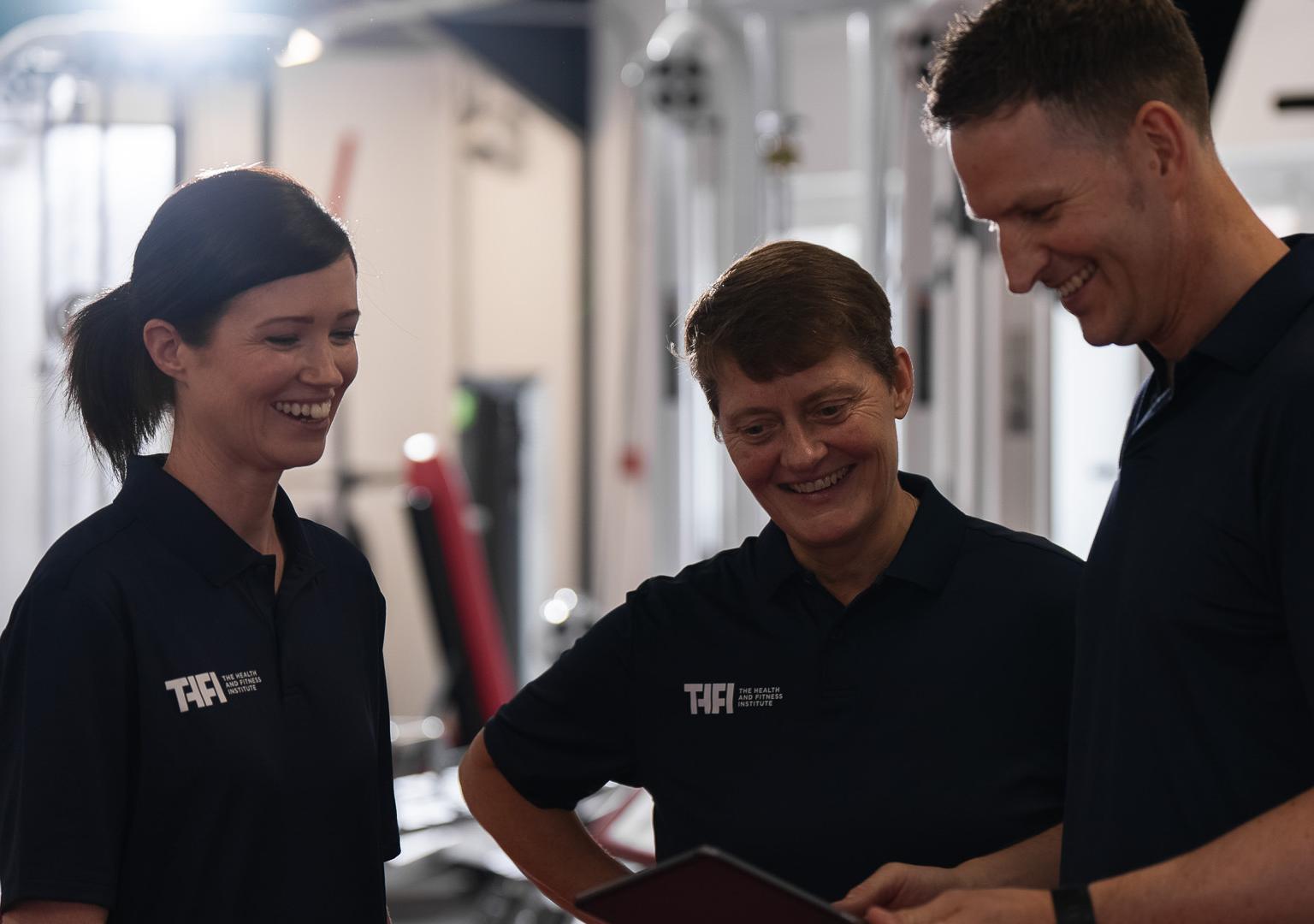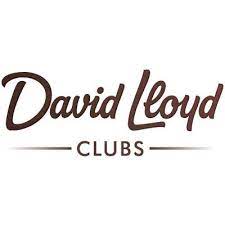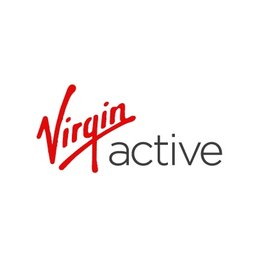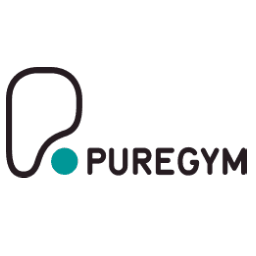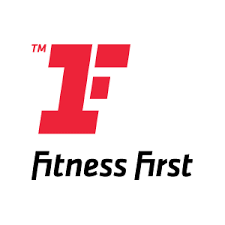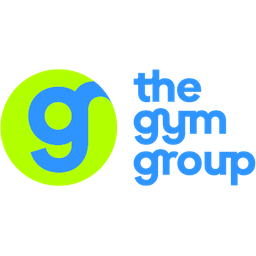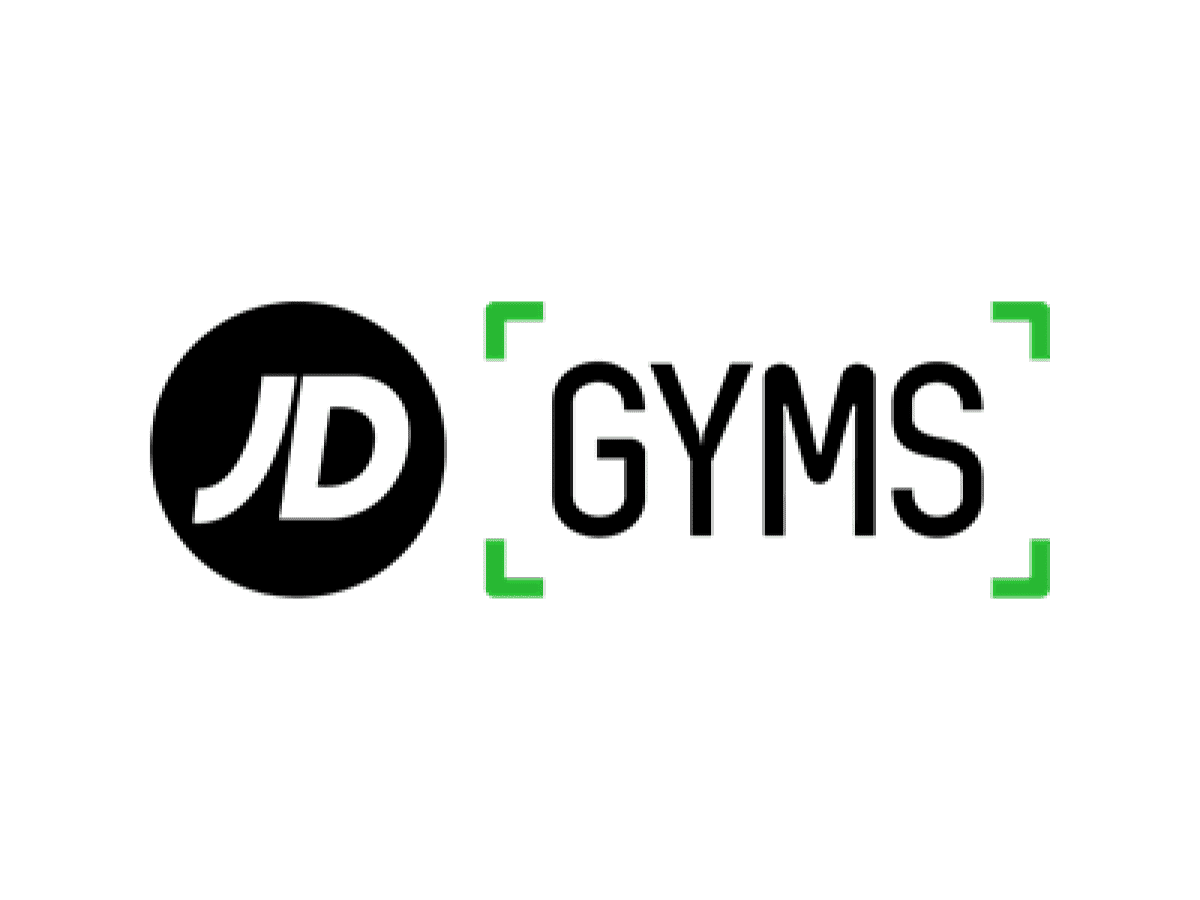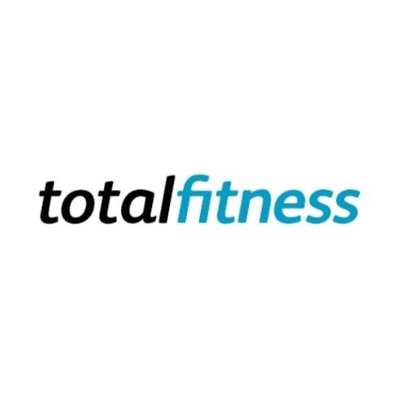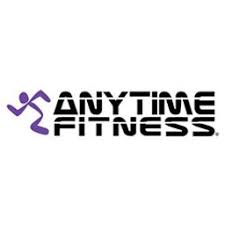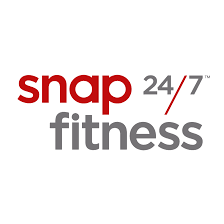How to Create a High-impact Content Strategy as a Personal Trainer

How do you stand out in a crowded market where every personal trainer or fitness guru is vying for attention?
Take one look at high-profile ‘fitness celebrities’ like James Smith or Joe Wicks and you will find the answers you’re looking for...
It’s not that they get amazing results or they’re in the best shape, it’s this...
They know how to build a personal brand, understand the audience they’re targeting, and create content that really connects...
Whether you want to build a six-figure business, gain more clients, or become a thought leader in your space, you need to do the same.
But a few Instagram posts every week aren’t going to cut it.
You need a proper content strategy, and we’re going to show you how to create one.
That includes learning about your audience, crafting your message, creating the right kind of content, the social platforms you can use, and even how to track the success of it.
It’s all here in our comprehensive guide...
Why creating high quality content matters for your fitness career
Creating content isn’t just posting a few cool pictures on social media or sharing information; it's a powerful tool for connecting with potential clients, establishing your expertise, and setting yourself apart.
In an industry flooded with generic fitness advice and repetitive workout routines, your content can be a breath of fresh air that draws clients to your unique approach and philosophy.
Understand your audience
To craft content that truly resonates, you need an in-depth understanding of your audience. Who are they? What are their fitness goals? Are they beginners overwhelmed by the world of fitness, or seasoned gym-goers looking for advanced techniques? Your content should speak directly to their needs, challenges, and aspirations. If it doesn’t, it will get lost in the crowd.
For instance, if your primary audience is beginners, your content might focus on foundational exercises, nutrition basics, and motivational strategies to keep them on track.
On the other hand, if your audience comprises fitness enthusiasts, you might delve into advanced training techniques, detailed nutritional guides, or the latest trends in fitness technology.
What are the best kinds of content to create?
Different types of content can cater to various preferences within your audience. Here are some ideas:
- Educational Blog Posts: These can range from 'How-to' guides on specific exercises, to articles on nutrition, recovery, and mental health in fitness. Use clear, concise language and back your articles with science and personal experience.
- Inspirational Social Media Posts: Platforms like Instagram or Facebook are perfect for sharing before-and-after client transformations, motivational quotes, or short clips of workout sessions. These posts can encourage your followers and give them a glimpse of the results they can achieve.
- Instructional Videos: YouTube or Instagram TV can be excellent platforms for posting workout videos, exercise demonstrations, or even day-in-the-life vlogs. Videos allow your personality to shine through and help you build a stronger connection with your audience.
- Interactive Content: Polls, Q&A sessions, and live workouts on platforms like Instagram Live or Zoom can foster a sense of community and engagement. They offer real-time interaction and provide immediate value to your followers.
The best platforms to maximise your content
In today’s digital age, personal trainers have a wealth of platforms at their disposal to maximise their reach and impact. From blogging and SEO to social media and video content, each platform offers unique opportunities to connect with a diverse audience and grow your personal training business.
Blogging and SEO strategies
A blog is more than just a space to share your thoughts; it's a strategic tool to increase your online visibility and establish your authority in the fitness industry. Here's how to maximise its potential:
- Focus on SEO: Use relevant keywords in your posts that your potential clients are likely to search for. Tools like Google Keyword Planner can help identify these keywords.
- Consistent and quality content: Regularly update your blog with high-quality content that provides value to your readers. This not only keeps your audience engaged but also improves your search engine rankings.
- Link building: Collaborate with other fitness websites or blogs to create guest posts. This not only expands your reach but also enhances your website's authority in the eyes of search engines.
How to leverage social media effectively
Social media platforms offer unique opportunities for personal trainers to build their brand and engage with their audience. Each platform caters to different types of content and interaction styles, making it essential to understand their strengths to maximize your online presence.
Ideal for sharing visual content such as photos and short videos. Utilise Instagram Stories and Reels to share quick fitness tips, workout demonstrations, or client testimonials. The platform's visual nature makes it perfect for showcasing your training techniques and client progress.
Great for creating a community around your brand. Use Facebook to share longer posts, host live Q&A sessions, and connect with your audience through Facebook Groups. It's also an excellent platform for sharing event information and running targeted ads.
Perfect for short, snappy updates, sharing fitness articles from your blog, and engaging in conversations with your followers and industry leaders. Twitter is a great platform for building your personal brand as a thought leader in the fitness industry.
TikTok
A rapidly growing platform that's ideal for creating short, engaging video content. TikTok's format is perfect for showcasing fun, high-energy aspects of fitness training, offering quick workout tips, and participating in trending challenges. It's an excellent tool for reaching a younger audience.
Ideal for building professional connections and sharing more detailed content. LinkedIn is a great platform for sharing articles, professional achievements, and networking with others in the fitness and wellness industry. It can also be used for publishing longer-form content that establishes your expertise in personal training.
Useful for sharing visual inspiration, workout plans, and nutrition tips. Pinterest is a go-to platform for many looking for fitness routines and health-related advice, making it a valuable tool for directing traffic to your website or blog. Remember, the key to social media success is engagement. Respond to comments, participate in relevant conversations, and create content that encourages interaction.
Video content and YouTube marketing
Videos are an incredibly effective way to demonstrate exercises, share fitness tips, and convey your training philosophy. YouTube, in particular, offers a vast platform for reaching a global audience and creating monetised content. Here are some strategies:
- Create diverse content: From workout routines and exercise demos to nutrition advice and personal vlogs, vary your content to keep your audience engaged.
- Educational value: Focus on providing educational content that empowers your viewers with knowledge and skills.
- Consistency is key: Maintain a regular posting schedule to keep your audience anticipating your next video.
- Engage with your viewers: Respond to comments, ask for feedback, and consider your audience's requests when creating new content.
Crafting your unique message
As a personal trainer, the message you convey through your content is not just about sharing fitness knowledge; it's about storytelling and personal branding. Crafting a message that resonates with your audience involves more than just facts and figures; it's about creating a narrative that connects with them on a personal level.
Storytelling and personal branding
Your personal brand is what sets you apart from your competition. It's a combination of your unique experiences, training style, philosophy, and personality. Here's how to weave storytelling into your brand:
- Share your journey: Talk about your own fitness journey, the challenges you faced, and how you overcame them. This not only makes you relatable but also inspires trust and credibility.
- Client success stories: Highlighting your clients' success stories can be incredibly powerful. It showcases your effectiveness as a trainer and motivates potential clients.
- Be authentic: Authenticity resonates with people. Share your beliefs, passions, and even your struggles. Let your audience see the person behind the trainer.
Creating engaging and informative articles
When it comes to writing articles, engagement and information are key. Here are some tips to ensure your articles are both captivating and informative:
- Understand your audience's needs: Address the questions and concerns your audience might have. Tailor your content to provide solutions and advice that they seek.
- Use a conversational tone: Write as if you're speaking to the reader. A conversational tone makes your content more relatable and easier to digest.
- Incorporate visuals: Use images, infographics, or videos within your articles to break the text and make the content more engaging.
- Provide actionable tips: Give your readers practical and actionable advice they can implement in their fitness routines.
- Keep it structured: Use headings, bullet points, and short paragraphs to make your articles easy to read and navigate.
Consistency and quality
In the realm of content creation, particularly for personal trainers, the dual pillars of success are consistency and quality. These elements not only help in building a loyal following but also establish your credibility as a knowledgeable and reliable source in the fitness industry.
Maintain a regular posting schedule
Consistency in posting is key to keeping your audience engaged and growing your online presence. Here’s how to achieve this:
- Develop a content calendar: Plan your content in advance. This includes deciding what to post and when to post it. A content calendar helps you stay organised and ensures a steady stream of content.
- Set realistic goals: Determine a posting frequency that is sustainable for you. Whether it's twice a week or every day, what matters is sticking to the schedule.
- Use scheduling tools: Platforms like Hootsuite or Buffer allow you to schedule your posts in advance, making it easier to maintain a consistent presence even on busy days.
Make great content people keep coming back for
While consistency brings your audience to your content, quality and relevance are what keep them there. Here’s how to ensure your content meets these standards:
- Stay informed and updated: The fitness industry is constantly evolving. Stay abreast of the latest research, trends, and techniques to ensure your content is current and relevant.
- Quality over quantity: It’s better to post less frequently with high-quality content than to post often with subpar material.Quality content is informative, well-researched, engaging, and reflects your expertise.
- Audience feedback: Listen to your audience. Their comments and interactions can provide valuable insights into what content resonates with them. Use this feedback to tailor your future content.
Strategies to measure the success of your content
You wouldn’t create a fitness plan without tracking and measuring your results. It’s the same for your content creation strategy.
It's not just about putting content out there; it's about understanding its impact and evolving your approach based on that data. Here’s what you need to know...
Harness analytics and feedback
Don’t blindly create content in the dark. You can use simple analytics to provide invaluable insights into how your content is performing. Here's how to use them effectively:
- Track engagement metrics: Use tools like Google Analytics for your blog or built-in analytics on social media platforms. Pay attention to metrics such as page views, likes, shares, comments, and the time spent on your content.
- Monitor conversion rates: If your goal is to attract new clients, track how many inquiries or sign-ups are generated through your content. This helps in understanding the direct impact of your content on your business.
- Seek direct feedback: Sometimes, the best way to gauge the success of your content is by asking your audience directly. Conduct surveys, ask for feedback in comments, or have one-on-one conversations with your clients.
Adapt to new fitness trends and audience needs
Whether it’s keto, kettlebell training, saunas, or smart supplements, there’s always some new topic or trend emerging in the health and fitness space. And the needs and interests of your audience will be constantly changing and evolving too. Stay flexible, stay current, and adapt your content strategy accordingly:
- Keep up with new fitness trends: Stay informed about the latest fitness trends and research. What’s in the news? What’s popping up on message boards? What’s trending on Twitter? Incorporating these into your content keeps it fresh and relevant.
- Listen to your audience: If certain types of content are more popular with your audience, consider focusing more on those. Similarly, if some content doesn't perform well, don't hesitate to tweak your approach or try something new. What are your favourite influencers or content creators from other spheres doing? See what you can use in your own space.
- Experiment with new formats: Don’t be afraid to experiment with different content formats. For instance, if you primarily write blog posts, try incorporating videos or podcasts. This not only keeps your content diverse but also helps you discover what resonates best with your audience.
By continuously measuring the success of your content and being willing to adjust your strategies based on analytics and audience feedback, you can ensure that your content remains effective, engaging, and aligned with your goals. This ongoing process of evaluation and adaptation is key to growing your brand and maintaining a strong connection with your audience.
Conclusion
Mastering the art of content creation is not just a ‘nice to have skill’, it’s a necessity if you want to rise above the noise and make it in this super-competitive fitness landscape.
Once you begin to understand your audience, sharpen your unique message, find the right platforms for your content, and then continue to post, refine, and improve, you’ll see the difference it makes to your business growth.
Content creation is more than just a means to an end; it's a dynamic way to connect, inspire, and grow both personally and professionally.
It allows you to not only showcase your expertise but also to build a community around your brand, making your personal training services more visible and accessible.
As you reflect on your current content strategy, consider these questions:
- Are you effectively connecting with your target audience through your content?
- How could you incorporate storytelling and personal branding to make your content more engaging?
- Are you utilizing the right platforms to reach your potential clients?
- How consistently are you posting, and is your content reflecting the quality and relevance your audience expects?
- Are you keeping track of your content’s performance and adapting your strategies based on feedback and trends?
Remember, the world of digital content is ever-evolving, and there is always room for growth and innovation. Use what you've learned here as a springboard to dive deeper into content creation.
Experiment with different approaches, learn from your successes and failures, and continually refine your strategy.





